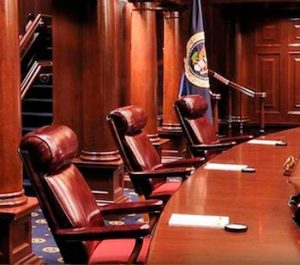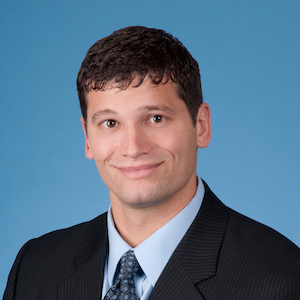Where the claims recite only conventional steps for discovering a natural law without meaningful non-routine steps in between, the claims are patent-ineligible under Section 101. Where the recited steps apply conventional techniques to detect a natural law, it is irrelevant that the steps are recited with specificity.
 As discussed in brief here, the Federal Circuit recently issued an opinion affirming the decision of the United States District Court for the District of Massachusetts, which held that Athena’s medical diagnostic methods were directed toward laws of nature and patent ineligible under 35 U.S.C. § 101. Athena Diagnostics, Inc. v. Mayo Collaborative Servs., LLC, No. 17-2508, 2019 U.S. App. LEXIS 3645 (Fed Cir. Feb. 6, 2019) (Before Newman, Lourie, and Stoll, Circuit Judges) (Opinion for the Court, Lourie, Circuit Judge) (Dissenting Opinion, Newman, Circuit Judge).
As discussed in brief here, the Federal Circuit recently issued an opinion affirming the decision of the United States District Court for the District of Massachusetts, which held that Athena’s medical diagnostic methods were directed toward laws of nature and patent ineligible under 35 U.S.C. § 101. Athena Diagnostics, Inc. v. Mayo Collaborative Servs., LLC, No. 17-2508, 2019 U.S. App. LEXIS 3645 (Fed Cir. Feb. 6, 2019) (Before Newman, Lourie, and Stoll, Circuit Judges) (Opinion for the Court, Lourie, Circuit Judge) (Dissenting Opinion, Newman, Circuit Judge).
The inventors of U.S. Patent 7,267,820 (the 820 Patent) discovered that about 20% of patients with the neurological disorder myasthenia gravis (MG) generate autoantibodies to a membrane protein called MuSK. Until their discovery, no disease had ever been associated with the protein. The ‘820 patent disclosed and claimed methods for diagnosing neurological disorders by detecting antibodies that bind to MuSK.
Athena Diagnostics (Athena), the ‘820 Patent’s exclusive licensee, sued Mayo Collaborative Services (Mayo) for infringement. Mayo moved to dismiss, and the district court granted Mayo’s motion, concluding that the patent claimed ineligible subject matter and was invalid under 35 U.S.C. § 101. Athena appealed, and the Federal Circuit affirmed.
The asserted claims recite steps to detect autoantibodies that bind to MuSK. Claim 1, which is not at issue in the case, recites:
- A method for diagnosing neurotransmission or developmental disorders related to muscle specific tyrosine kinase (MuSK) in a mammal comprising the step of detecting in a bodily fluid of said mammal autoantibodies to an epitope of muscle specific tyrosine kinase (MuSK).
Claim 7, one of the claims at issue, further recites:
- A method according to claim 1, comprising contacting MuSK or an epitope or antigenic determinant thereof having a suitable label thereon, with said bodily fluid, immunoprecipitating any antibody/MuSK complex or antibody/MuSK epitope or antigenic determinant complex from said bodily fluid and monitoring for said label on any of said antibody/MuSK complex or antibody/MuSK epitope or antigen determinant complex, wherein the presence of said label is indicative of said mammal is suffering from said neurotransmission or developmental disorder related to muscle specific tyrosine kinase (MuSK).
Claim 8 depends from claim 7 and recites that the label is a radioactive label. Claim 9 further depends from claim 8 and requires “1) contacting MuSK or an epitope thereof having a 125I
label, with bodily fluid; (2) immunoprecipitating any antibody/MuSK complex; and (3) monitoring for the label on the complex, wherein the presence of the label indicates the
presence of a MuSK-related disorder.” The specification of the ‘820 Patent explains what iodination and immunoprecipitation entail and specifically discloses that “[i]odination and immunoprecipitation are standard techniques in the art.”
Applying Mayo/Alice
The Court applied the two-part test set forth by the Supreme Court in Mayo v. Prometheus and Alice Corp. v. CLS Bank, examining: (1) whether the claims are “directed to” a law of nature, and, if so, (2) “whether the limitations of the claim apart from the law of nature, considered individually and as an ordered combination, transform the nature of the claim into a patent-eligible application.”
Regarding the first prong of the test, the Court addressed whether the claims were directed to a law of nature. To determine whether the claim is directed to an ineligible concept, the Court considered “whether the claimed advance improves upon a technological process or merely an ineligible concept.” Thus, where “[t]he claimed advance harness[es] a natural law to produce a technological improvement,” the invention may be patent eligible. Claims that “merely recite observing naturally occurring biological correlations with no meaningful non-routine steps in between” are, however, not.
The Court ultimately found the claims were directed to a law of nature, specifically the correlation between the presence of naturally-occurring MuSK autoantibodies in bodily fluid and MuSK-related neurological diseases. The Court reasoned that the claims recited only the discovery of a natural law together with concrete, standard steps for observing its operation. The specification itself described the invention as the discovery of a natural law and described the claimed steps for observing the natural law as conventional. The additional recited steps applied conventional techniques to detect the natural law – that they were described with specificity was irrelevant.
Regarding the second prong, the Court found the claims lacked an inventive concept sufficient to transform a law of nature into a patent-eligible application of the law. As step two of the Mayo/Alice test, the Court considered “the elements of each claim both individually and as an ordered combination to determine whether the additional elements transform the nature of the claim into a patent-eligible application.” Here, the specification defined the individual immunoprecipitation and iodination steps and the overall radioimmunoassay recited in the claims as conventional techniques. Because the recited steps only required standard techniques to be applied in a standard way, the claims failed to provide an inventive concept.
For these reasons, the majority upheld the district court’s finding of invalidity.
Newman Dissents
Judge Newman issued a dissenting opinion. There, she stated that, considered as a whole, the claims were not directed to a law of nature but rather to a multi-step method of diagnosing neurological disorders by detecting autoantibodies using a series of chemical and biological steps. According to Judge Newman, the majority ignored specific claimed steps by which the diagnosis is performed and thereby improperly discarded claim limitations and failed to consider each claim as a whole.
Judge Newman also pointed out that, prior to the discovery of the diagnostic method, 20% of patients suffering from MG were not capable of being diagnosed. The inventors applied their discovery of the autoantibodies that bind to MuSK to create a new method of diagnosing a condition that was previous undiagnosable. Rather than “claiming the scientific fact of a newly described autoantibody[,] they are claiming a new multi-step diagnostic method.” According to Judge Newman, “[t]his new and improved technique, for producing a tangible and useful result, falls squarely outside those categories of inventions that are ‘directed to’ patent-ineligible concepts.” Judge Newman warned against exacerbating “the judge-made disincentives to development of new diagnostic methods. … The loser is the afflicted public, for diagnostic methods that are not developed benefit no one.”

![[IPWatchdog Logo]](https://ipwatchdog.com/wp-content/themes/IPWatchdog%20-%202023/assets/images/temp/logo-small@2x.png)


![[Advertisement]](https://ipwatchdog.com/wp-content/uploads/2024/04/UnitedLex-May-2-2024-sidebar-700x500-1.jpg)
![[Advertisement]](https://ipwatchdog.com/wp-content/uploads/2024/04/Artificial-Intelligence-2024-REPLAY-sidebar-700x500-corrected.jpg)
![[Advertisement]](https://ipwatchdog.com/wp-content/uploads/2024/04/Patent-Litigation-Masters-2024-sidebar-700x500-1.jpg)

![[Advertisement]](https://ipwatchdog.com/wp-content/uploads/2021/12/WEBINAR-336-x-280-px.png)
![[Advertisement]](https://ipwatchdog.com/wp-content/uploads/2021/12/2021-Patent-Practice-on-Demand-recorded-Feb-2021-336-x-280.jpg)
![[Advertisement]](https://ipwatchdog.com/wp-content/uploads/2021/12/Ad-4-The-Invent-Patent-System™.png)






Join the Discussion
7 comments so far.
Anon
February 19, 2019 05:09 pmThanks xtain,
And how could I forget: “Run away!”
xtian
February 19, 2019 02:11 pmOne of my favorites:
“who is your Lord?”
“we done’t have a Lord.”
“What?”
“I told you, we’re an anarcho-syndicalist commune.”
Anon
February 19, 2019 07:39 amAh, Benny, not so, as the meme of “floating witches,” or more generally, “she’s a witch,” or more specifically, “she turned me into a newt once… I got better” is not an item altogether unfamiliar here.
The general meme of “witch test” has seen a “liberal dousing” in the patent blogs from at least the contributor Night Writer.
On more than one occassion, a particular YouTube link directed to one of the better Monty Python pieces has been appended to such comments.
Shrubbery, only a flesh wound, what IS your favorite color…?
Benny
February 19, 2019 02:14 amHarbinger,
Many of the US based readers of this column might need a pointer to your Monty Python reference. British humour is often lost on the western Atlantic shore.
Harbinger
February 18, 2019 11:24 amYet another rediculous “does the witch float” opinion from Lourie.
Anon
February 18, 2019 09:53 am… plainly wrong on a basis of interpretation using the criterion “directed to”
I am curious as to what (if any) effect the new examination protocol for eligibility from Director Iancu would have on this “directed to” notion, being that the emphasis from the Director was to the (arguably different) notion of “recited” on a more direct ‘per se’ or ‘as such’ basis.
Clearly, while Mr. Cole believes the instant decision to be legally incorrect regardless, there remains an arguable gap between the new directions for examination and the criteria used by the courts (even if used in more of a liking to Mr. Cole).
Paul Cole
February 18, 2019 06:27 amThere can be no question that the invention falls within the eligible “process” category of Section 101 because it is of a transformative nature involving two new chemical entities, firstly radiolabelled MUSK and secondly the triple autonatibody/labelled MUSK/Sheep IgG complex which is a material new to science, isolated by centrifugation and useful for evaluation by radioactive counting. What is produced is a new manufacture falling within Hartranft v Wiegmann, cited with approval by the Supreme Court in both Diamond v Chakrabarty and Association for Molecular Pathology v Myriad Genetics.
The CIPA amicus brief which I authored included a diagram of the various method steps, intended to enable even an idiot to see the point, and numerous references to the pertinent case law. Unfortunately the majority of the panel judges missed it. Clear error, and definitely a strong case for certiorari to the Supreme Court in my view, since the panel opinion is plainly wrong on a basis of interpretation using the criterion “directed to” which leads to consistent disregard of the true meaning of patent claims and gross error of interpretation, and to a virtual categorical exclusion for diagnostic methods which cannot have been ntended by Congress.